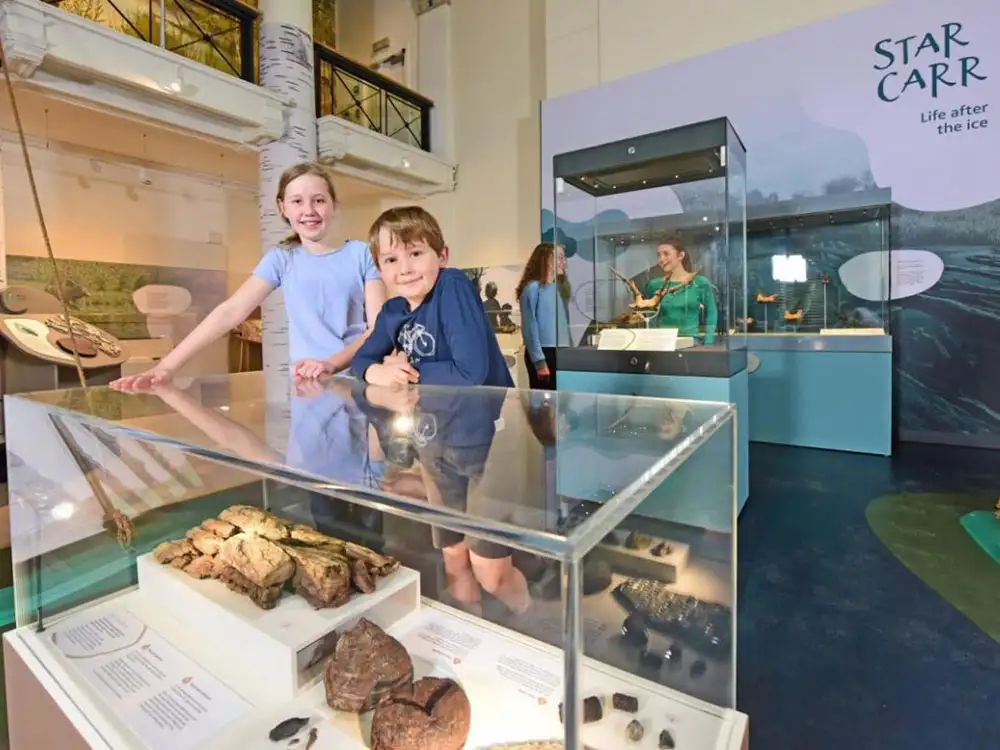Explore what life was like 11,000 years ago – as the Yorkshire Museum launch new interactive exhibition.
The exhibition will being together artefacts from one of the most famous Mesolithic (Middle Stone Age) sites in the world: Star Carr. Uncover the earliest example of houses in Britain, discover how they made fire, and why the period may be better described as the bone age.
Star Carr: Life After the Ice opens today, Friday 22 March, at the Yorkshire Museum.
The North Yorkshire site was once a settlement which existed at a time when Britain was still connected to Europe, and has deepened our understanding of how people lived and the landscape they inhabited during the Mesolithic period.
Star Carr: Life After the Ice will showcase artefacts that explore how communities settled, created, cooked and worshipped – such as antler headdresses, decorated stone pendant, and the world’s oldest complete hunting bow.
Visitors will be immersed in the Mesolithic world of Star Carr through an interactive mural and soundscape. Children will also be able to follow the story of Star Carr through the eyes of a friendly dog who lived with the people by the lake.
A wider programme of events will run alongside the exhibition, with family-friendly events including weaving workshops, headdress-making and pendant-making.
The exhibition has been part funded by the University of York through the Department for Science, Innovation and Technology (DSIT) Regional Innovation funding.
Adam Parker, curator of archaeology at the Yorkshire Museum said: “The Star Carr collection holds some of the most rare and special objects from Mesolithic Britain and this exhibition will form the finest and most diverse display of Mesolithic items in the country.
“We are delighted to be working in partnership with the University of York on this project and to have the expertise of their researchers to help us to bring the settlement of Star Carr to life for visitors of all ages.”
Entry to Star Carr: Life After the Ice is included in general admission. For more information and to book tickets in advance, visit the Yorkshire Museum website.
